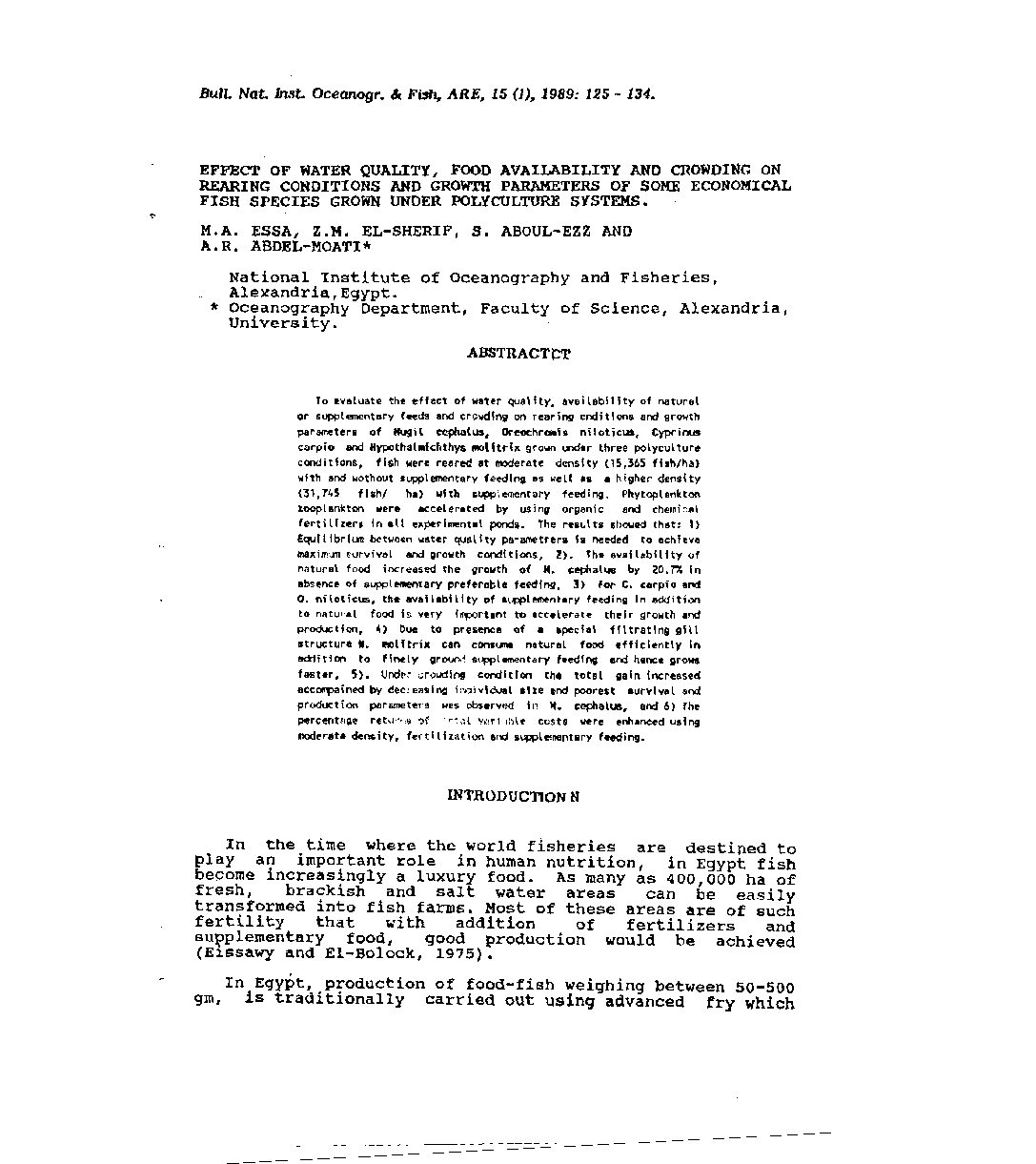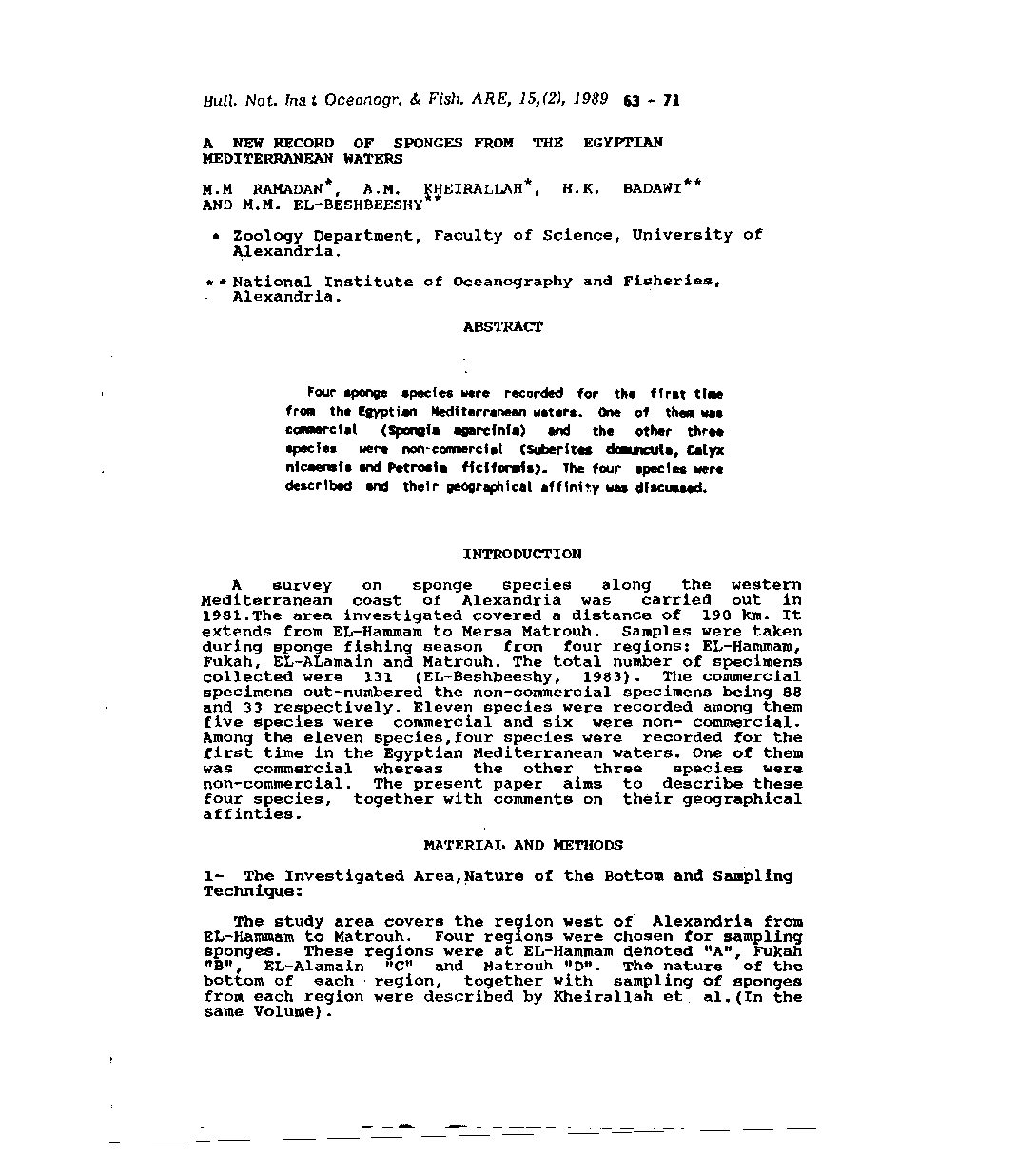Categories
vol-15EFFECT OF WATER QUALITY, FOOD AVAILABILITY AND CROWDING ON
REARING CONDITIONS AND GROWTH PARAMETERS OF SOME ECONOMICAL
FISH SPECIES GROWN UNDER POLYCULTURE SYSTEMS.
M.A. ESSA, Z.M. EL-SHERIF, S. ASOUL-EZZ AND
A.R. ASDEL-MOATI*
National Institute of Oceanography and Fisheries,
Alexandria, Egypt.
* Oceanography Department, Faculty of Science, Alexandria,
University.
ABSTRACT~
To ~valu.te the effect of water quality, availability of naturol
or supplementory feeds and crowding on rearing cndi tiona ond growth
parameter. of HugH e”P”olus, Oreochr…ls niloticus. CyprintJ!l
carpio ond Hypothalllichthys IIIOlltri” grown under three pelycul ture
conditions, fish were reared at moderate density (15,365 flsh/ha)
with .nd wothout supplementory feeding a. well as a higher density
(31,745 fish/ ha) with supplementary feeding. Phytoplankton
looplankton ~re acceleroted by using organic and chemica’
fertililers In oll experlmentol ponds. The results showed that: I>
Equll tbr Iurn bet”een ..ater quail ty parametrere Ie needed to och Ieve
mBxim’..III survivel end growth conditions, Z). The ovallabillty of
noturol food ;ncreosed the growth of M. cephal”” by 20.7X In
absence of aupplementary preferable feeding, 3> for C. corpio and
O. nilotlcus. the ev.llobllity of supplementory feeding In lIddltion
to natural food Is very “rportent to accalerate their growth and
production, 4) Oue to presence of 0 epeclol filtrating gill
structure II. flOlltrill con cons.- naturol food efficiently In
lIddition to finely grou(\,’ aupplementary feeding end hence gro”.
faster, 5). llndrr cr”wding condition the total llalo Increa&~d
8cc~8ined by dec’ easing 1″‘,eJjvldual slle and poorest aurvival and
production pIlr.met~'” ..es obserwd In II. cl’f’halus. and 6) The
percentElge ret\”I~’~il;;; ~r ‘r·~,~t “”,,~rl 1\)\'” tests were enhanced usfng
lIloderate density, fertqlzation arid suppletnentery feeding.







